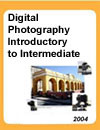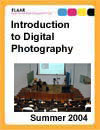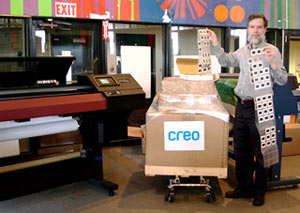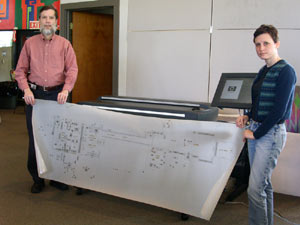



For 2004 FLAAR is initiating several new programs in Maya iconography in cooperation with the Museo Popol Vuh. Check back this summer for more information. If you wish to work on any of these projects, we accept volunteers from universities, museums, or individuals who have special talents. Sorry, no short time volunteers (has to be a reasonable period), no volunteers off the street (has to be arranged in advance).
Archaeology, Maya art, Mayan pyramid architecture of Guatemala and Honduras with links to related sites and information on the role of digital imaging in archaeological research. This site also offers suggestions for books on the Olmec, Teotihuacan, Aztec, and Maya. Travel information for Mexico, Belize, Honduras, and Guatemala with lists of recommended hotels and Spanish language courses. Precolumbian Mayan art is a fascinating subject and this site offers all aspects of Mayan art, from jade to Mayan hieroglyphs and epigraphy. This site on Mayan art also explores iconography, the study of meaning in art.
| Training programs in digital photography by FLAAR | ||
|
|
 September 2004 Introductory to intermediate Taught in via Internet / Lecture in English Request information |
 Summer 2004 First level course Taught in Guatemala / Lecture in Spanish Request information |
| Course material will all be in English; however you can correspond en español oder auf Deutsch | ||
These courses are pertinent for students as well as museum curators, photographers, artists, and any instructor who themselves wish to learn how to develop courses in digital photography. No prior experience necesary; includes training in Adobe Photoshop if you need help in that also.
This site presented by Professor Nicholas Hellmuth, Francisco Marroquin University (during the summer) and Bowling Green State University of Ohio (rest of the year). E-mail [email protected]
Universidad Francisco Marroquin opens new center for advanced digital imaging dedicated to rollout photography, scanning, and large format printing for art history, archaeology, and architecture. Details coming later. Dr Nicholas Hellmuth is in Guatemala organizing this new facility. Hewlett-Packard provides large format printer equipment; Lowel provides photo studio lighting. Sola provides electrical power conditioners. BulbMan provides lamps and PMI provides computer accessories. Epson-America provided an Epson 7500 large format inkjet printer in order to print images of pre-Columbian art and archaeology.
 |
FLAAR acquires a super high quality flatbed scanner to scan its Photo Archive. We are pleased to report that after three years effort we have obtained from
Creo a$45,000 flatbed scanner, the absolute top quality brand in the world. The entire FLAAR Photo Archive has been moved from
Florida to Bowling Green State University in Ohio to be scanned. As soon as the 50,000
original 35mm, 8,000+ medium format negs, and thousands of 4x5 chromes have
been scanned, we will seek a museum, library, or archive either in the US,
Canada, or Europe that might wish to acquire the originals. BGSU does not have an
anthropology department nor a museum, so we do not intend to house the
original negatives here in Ohio. |
 |
FLAAR now has 300 dpi, 42" wide format full color scanner available to assist archaeologists digitize their legacy maps and drawings. FLAAR will be
shipping to their office at Universidad Francisco Marroquin in Guatemala this $18,000
scanner in order to assist Guatemalan archaeologists and others working in
Guatemala from universities and museums elsewhere. As
soon as this scanner arrives in Guatemala it's use will be open to any
scholar or student at a reasonable fee (simply to cover the cost of the operator). |
|---|---|---|---|
| This CreoEverSmart Supreme scanner achieves up to 5000 + true opical dpi and can scan 40slides at a time. | Universities, departments, libraries, or museums who would like to bid for the original of this archive should communicate with [email protected] | Here Dr Nicholas Hellmuth does test scan ofhis sketch of Nakum, El Peten, Guatemala, mapped by FLAAR in the 1970's. |
| New
book on Maya art |
Archives digital images | Art Epigraphy iconography | Tikal pyramids travel info | Equipment scanners cameras | Maya photo exhibits | Recommended hotels in Guatemala | ||
| Maya vase rollouts | Corporate sponsors | New lecture abstracts Maya vases | Volunteer archaeology in Guatemala | Symposium reviews | Ancient Maya sports | QTVR 3-D movies | Directory art index archaeology | Digital imaging |
|
This
is an award winning site. New,
Mayan hieroglyphs
and Chama
polychrome vases
Maya
Archaeology Home Page, Maya artifacts and Olmec jade. Digital Photography . Information on digital imaging and cameras Volunteer opportunities at the Museo Popol Vuh and FLAAR Digital Imaging Center travel information, review of the best hotel in Guatemala hotels near the Maya ruins in Peten:Yaxha, Sayaxche, Flores (Tikal) |
The rise and fall of Maya civilization offers an intellectual adventure into the world of archaeology. Facts and artifacts from scientific research can be as exciting as your mind allows.The ancient murals, sculptures, and painted vases of the Classic Maya reveal an eye-witness window onto awesome ceremonies and bizarre rituals. Let us prepare you to experience 6th century Tikal, 8th century Palenque, 9th century Chichen Itza, or 12th century Tulum, to witness reality more exotic and exciting than any Hollywood fantasy. Let your intellectual curiosity take you back in time, deep into the rain forests of Central America, to meet the Maya face to face.
Dr Nicholas Hellmuth was in Guatemala from Sept '99 to Feb. '00, as usual, doing digital rollout photographs of important Maya vases and bowls at the Museo Popol Vuh (shown here, doing a rollout of a bowl with the Better Light direct-digital rollout system on a Sinar X camera courtesy of Sinar Bron. Hellmuth just attended GraphExpo trade show in Chicago, Seybold '99 in San Francisco, Comdex computer trade show in Las Vegas, PMA 2000 and earlier was at CeBIT '99 in Hannover, Germany. Thus you can expect lots of information about the latest developments in digital imaging and how this improvides the ability of archaeologists to learn about the rise and fall of Classic Maya civilizations of Guatemala, Belize, Honduras, and Mexico.
At the right, the Museo Ixchel, the best museum for indigenous Maya textiles, Maya weaving, and costumes of the Maya people of Guatemala. FLAAR is currently organizing an exhibit at this museum of wide format inkjet enlargements of Mayan textiles. At
the left above, the best way to print images for museums (for display,
for sale in the book shop, or for reference for research. Wide format
color inkjet printer, 36 inches wide (by 100 feet long). Exhibit quality
digital images. Shown here, Hewlett-Packard DesignJet model 2800CP
|
||
|
Information about this web site Dr
Hellmuth has returned to Germany after six months in Guatemala photographing
Maya art at the Museo Popol Vuh. |
|||
| Books | Archives | Art | Tikal GIFS | equipment | exhibits | Jade Jaguar | You | Goals |
| home | sponsors | credits | Volunteers | Pictures | sports | VR movies | Directory | Imaging |
|
Wide
format digital photo printers:
for Maya art and archaeology |
Exciting
new way to enlarge photographs of Maya
art, Maya textiles
|
|
Enlargements
of Maya
vase rollouts
|
Beautiful
photographs of ancient Maya musical
instruments (flutes and ocarinas)
as attractive posters using large format digital printers
|
|
New
headquarters for F.L.A.A.R.
Digital Imaging Technology Center in Guatemala |
Posters
of 5th century Teotihuacan-Tiquisate female
figurines to announce new museum
|
Pre-Columbian means before Columbus landed on the shores of the New World. This may be written as precolumbian or pre-Columbian. Although this term applies to the entire New World, it is used primarily to discuss ancient Mesoamerica. A synonym for pre-Columbian would be pre-Hispanic.
Pre-Hispanic, also written somewhat less correctly as prehispanic, means before the Spanish conquered Mexico and Peru.
Mesoamerica, always written as one word, means the area of the New World that was occupied or significantly influenced by the leading civilizations of the area, namely the early and precocious Olmec, the expansionistic Teotihuacan culture, the subsequent Toltecs, or the final Aztec. Naturally the Maya are a main component of the concept of Mesoamerica as well. Mesoamerica includes most (but not all of) Mexico, all of Belize (former British Honduras), Guatemala, Honduras, El Salvador, Nicaragua, and parts of Costa Rica. The equivalent terms for the pre Hispanic civilizations of South America would be "Andean," namely the Incas, Moche, Chavin, Huari (Wari) and other great cultures of Peru and adjacent countries.
The Maya area encompass the Mexican states of Tabasco, Yucatan, Campeche, Quintana Roo, and Chiapas, plus adjacent Belize and most of Guatemala, especially the Peten (El Peten) and Quiche (El Quiche). Portions of El Salvador and Honduras are also within the greater Maya area. Since this section doubles as an abstract of the overall web site and also as a glossary, it is worth pointing out a few common ways not to spell the name of these countries. Guatemala is the proper way, not Guatimala or Guatamala. Belize is the spelling in English, Belice is the spelling in Spanish.
In Guatemala the key Maya sites, in addition to Tikal, are Uaxactun, Yaxha, Nakum, Piedras Negras, Dos Pilas, Aguateca, Seibal, El Mirador, Nakbe, and hundreds more. But Guatemala was also the home for several non-Maya people, such as the Cotzumalhuapa people with their capital of Bilbao. Escuintla was the home to several other non-Maya cultural groups, including the enigmatic Tiquisate culture.The Olmec also influenced early Guatemala. Otherwise, the main home of the Olmec was in far away Veracruz and Tabasco, Mexico. FLAAR offers tours, trips, vacations, and archaeology expeditions to the Olmec, Maya, Mixtec, Zapotec, Toltec, Aztec, areas as well as to El Tajin and other fascinating ruins of Veracruz.
The best known Maya sites are Tulum and Chichen Itza, since everyone who visits Cancun, Mexico, goes to Tulum and Chichen Itza. Other key Maya sites are Uxmal, Labna, Sayil, Kabah, Palenque, Copan, Tikal, Edzna. Lesser visited Maya ruins include Calakmul, Tonina, Bonampak, Yaxchilan, Edzna, and hundreds more.
Sub-areas of the Maya are the Chenes, with Santa Rosa Xtampak being an important ruin. The Puuc area includes the Uxmal core area but also over 150 other Maya sites. The Rio Bec area is to the south, with Rio Bec A, Rio Bec B, and dozens more. Xpuhil, Becan, and Chicanna are especially interesting sites.
Oaxaca, Mexico, offers another concentration of preColumbian civilizations, such as the Mixtec, Zapotec, and whoever it was that built Dainzu. Dainzu sculpture pictures a bizarre ball game where the athletes used masks and gloves. The players were fully padded as though it was rocks they were throwing in the game, not rubber balls. In the normal Mesoamerican ballgame, the ball was of rubber, and usually hit with the hips or a chest device known as a ball deflector. Key sites in the Oaxaca area of Mesoamerica are Mitla and Monte Alban.
Teotihuacan, Xochicalco, and Tula are regional capitals of their respective civilizations. Museums at these sites will show you the art, artifacts, and sculpture. Architectural history of these societies is another educational aspect of studying these groups.
Most of these pre Hispanic peoples played a variety of sports, especially the rubber ball game, known from the infamous scenes in the ball court of Chichen Itza. Other ballcourts are at Copan, though actually almost all Maya cities have ball courts. Several conferences, forums, and symposiums have been organized on the ballgames of ancient America. You can do a search by subject within the books section of this site. Many publications cover these subjects.
Maya or Mayan. Maya is both a noun and an adjective. The word Mayan is technically correct only for the language. Thus, the Maya people spoke the Mayan language. Too make it all the more confusing, one of the Mayan languages is "Yucatec Maya." Today, in normal American usage, Mayan is accepted as the adjective, though scholars prefer to keep to the word Maya. The Maya people built fabulous Maya pyramids while speaking Chol Mayan language with some influence from Yucatec Maya language. These are separate Mayan languages, not dialects.
The word archaeology can be spelled, and mis-spelled a variety of ways, such as archeology. Archaeology is a sub-discipline of anthropology, as are ethnography and ethnology. Often these are grouped with the Social Sciences, often with the Humanities. Obviously the arts come into play as well, since the Aztec, Olmec, Mixtec, Maya, Zapotec, Toltec, Teotihuacan, West Coast Mexico, and other prehispanic civilizations produced all kinds of art, murals, sculpture, stelae, pottery, and monumental architecture. Their most famous buildings are temples, pyramids, palaces, ball courts, and sweat baths.
In the beginning archaeology was a search for buried treasure, tombs, and gold, or in the case of the Maya, for jade and polychrome painted vases. Nowadays it is a search for knowledge that keeps most archaeologists going. Settlement pattern surveys are considered far more appropriate than digging up tombs. Potsherds, especially rim sherds, are the mainstay of archaeology today. Artifacts, not art, is the main subject matter of field projects. Chert (flint is not found in Central America, just the form that is properly called chert), obsidian, and seashell are the main form of Maya artifacts in addition to pottery.
In art the Maya worked jade (jadeite), stone of many kinds especially chert (usually misnamed as flint), obsidian (volcanic glass), seashell, bone, etc. Jade comes in a variety of colors. Check out the section of our web site on the Tomb of the Jade Jaguar. The artists who produced the pottery and the sculptors who handled the jade are a credit to the achievements of this enterprising culture. Pottery making was an important industry in pre-Columbian Mesoamerica. Pictures are available in art books, text books, coffee table art books, Sotheby Parket Bernet catalogs (Sotheby's), Christies auction catalogs, and other gallery catalogs. Art museums, art museum catalogs, and traveling exhibits also provide pictures of Maya art.
The Maya are increasingly famous for their ancient scripts. People who study ancient hieroglyphs are known as Epigraphers. They practice epigraphy. Glyphs is an abbreviation of hieroglyphs. Often they are misnamed as hieroglyphics. Human languages are always enjoyable to study. Plenty of Mayan-English, Mayan-Spanish dictionaries are available. Many people have a hobby to study precolumbian Mayan hieroglyphs. Linguistics is the field of study of language, linguists are the specialists who do this. Most Mayan hieroglyphic inscriptions are on stelae (stela, or stelas, spelled variously), on altars, lintels, and other monumental stone sculpture. In the last few years people have focused intensely on deciphering the Primary Standard Sequence of glyphs on polychrome Maya vases. Rollouts (circumferential rollout photographs) are the way to study this class of ancient artifact. The main form of hieroglyphic writing was probably in codices. The Aztec, Mixtec, and Borgia Group cultures also had codices, which are published by ADEVA, in Graz, Austria (see books section of this web site).
Other aspects of Maya civilization which attract study are their music. The ancient Maya had ocarinas, whistles of a variety of kinds, and wind instruments. Dance was a key part of ceremonies. In their daily life fishing and hunting were common, especially for deer, peccary, and all kinds of small animals. Today bird watching is a popular activity for tourists. The rain forest is filled with all kinds of tropical birds, as well as flowers, plants such as heliconia, orchids, and bromeliads.
Archaeologists also need to study geology (jade or jadeite, obsidian, chert or flint, cinnabar, etc). On expedition archaeologists also have to know about soils, botany, native horticulture, as well as local plants and flowers of Latin America. The Maya reverred many plants and flowers such as the water lily. Zoology is also part of the multi-disciplinary approach, with insects, amphibians, reptiles (especially snakes and iguanas), birds, and mammals.
Discovery and exploration was an exciting epoch. Maudslay, Maler and other explorers left fascinating diaries of their first visits to the Maya sites. Check out the books section for their writings.
Scholars who study art history of the Maya area usually practice what is known as iconography, the study of meaning in art. Aesthetics, connoiseurship, style, and other aspects are also included in art history. Archaeologists who work in the Maya area are trained in anthropology, social anthropology and cultural anthropology, and not really in art or art history. Thus art appreciation is a rare sub-speciality in Mesoamerican studies. A person who devotes themselves to the study of anything having to do with the Maya is known as a Mayanist. Since the subject of Maya civilization involves so much that is artistic, our web sites are devoted to increasing awareness of the visual arts of ancient civilizations and peoples. Ethnography is the study of a culture, ethnology is the comparative study of many cultures. A new glossary by Nicholas Hellmuth is being finished which should help understand this jargon.
Many institutes are involved in the study of the ancient Maya, both at leading universities as well as smaller institutes such as F.L.A.A.R. Weekend seminars, courses, and educational programs are increasingly popular.
Although most beginning students seek all their answers from the Internet, we urge you to get your hands on pertinent books, journals, and other publications as well. Reading books will give you a depth of knowledge that is never going to happen on the Internet. Wonderful though the Web is, web sites are only the surface of the subject. All the real facts and artifacts are in books. For that reason our flagship web site is devoted to books, namely www.maya-art-books.org. The book service itself is being moved and will reopen next year. In the meantime, all Maya art research programs are in full swing and our photo crew has been in Guatemala the last several months doing extensive rollout photography. To see the rollouts look at the index/directory for each of the eight sites in our F.L.A.A.R. network.